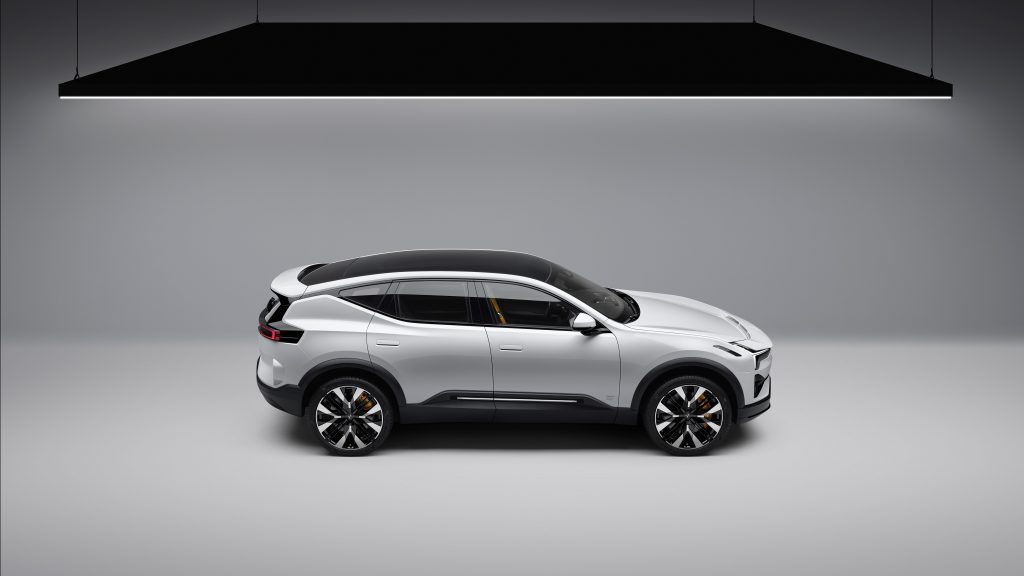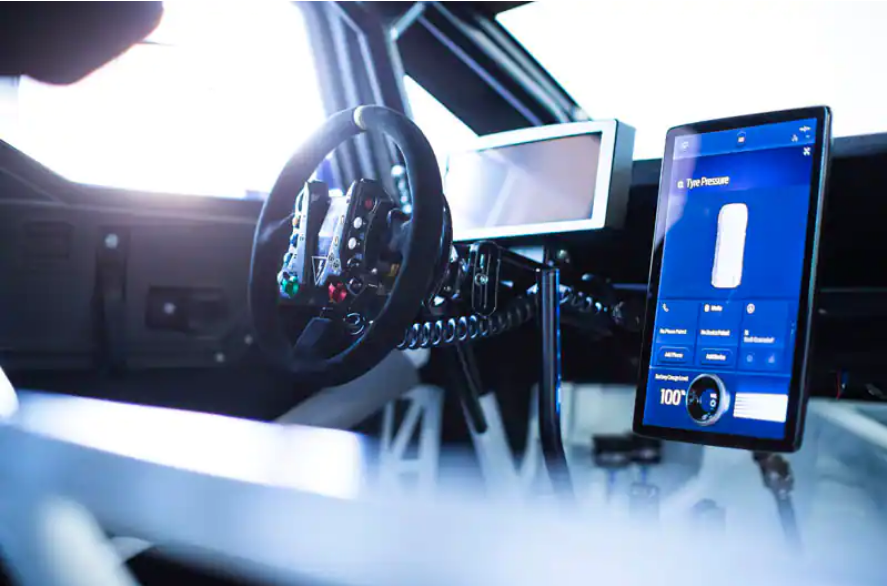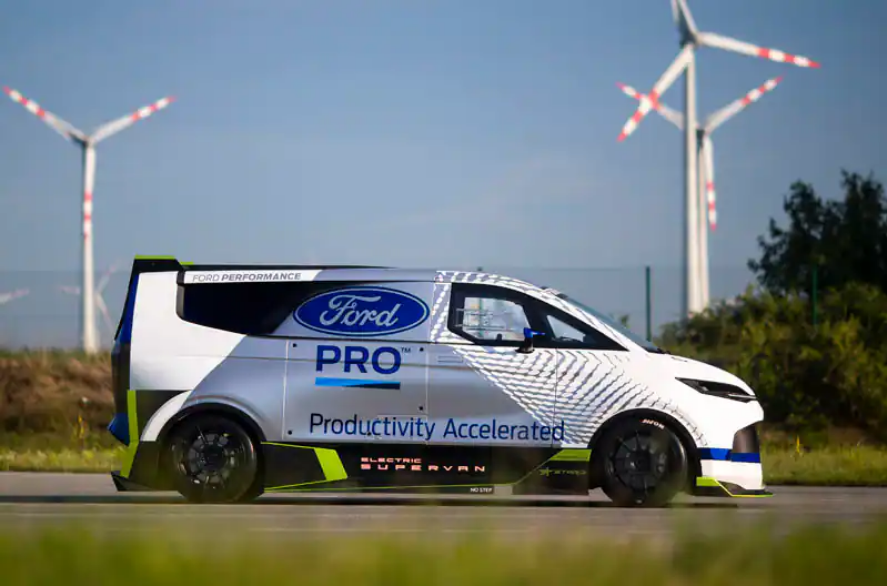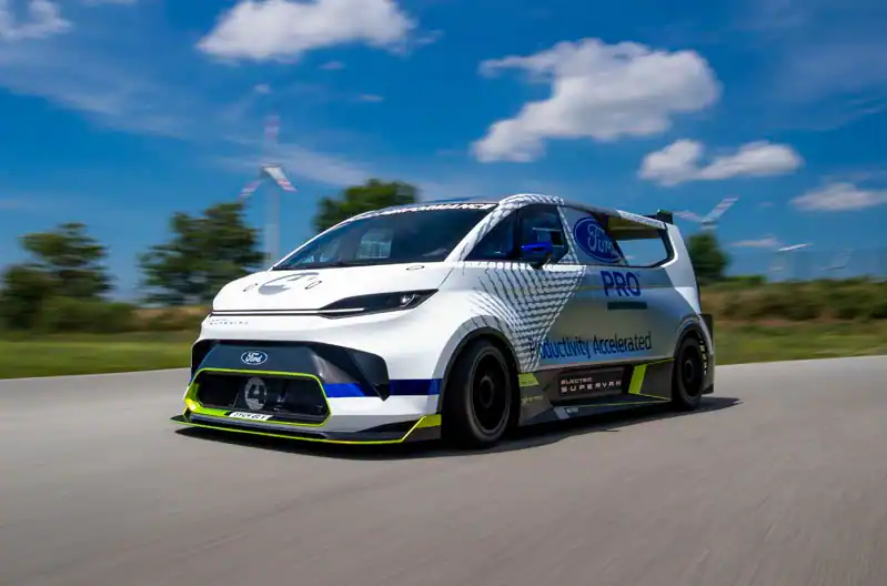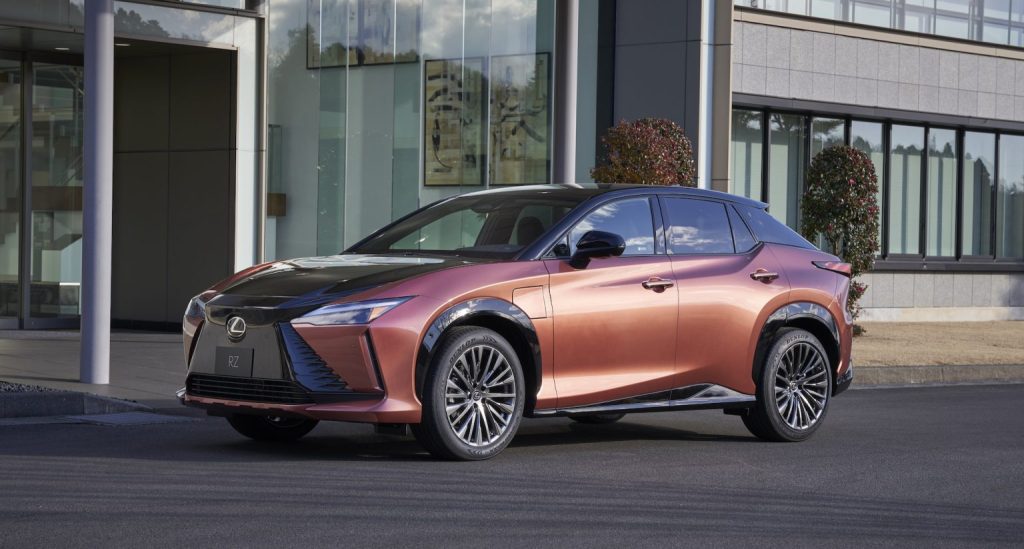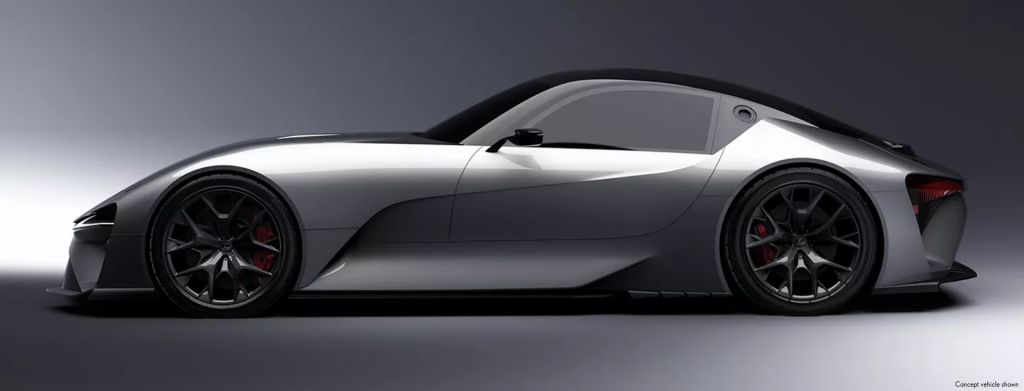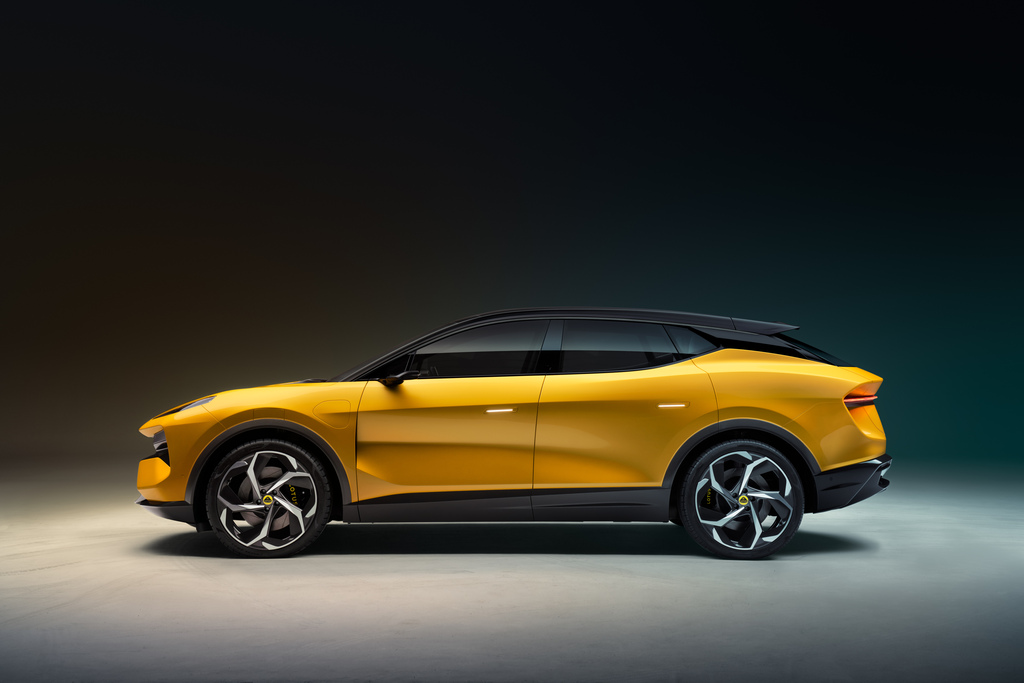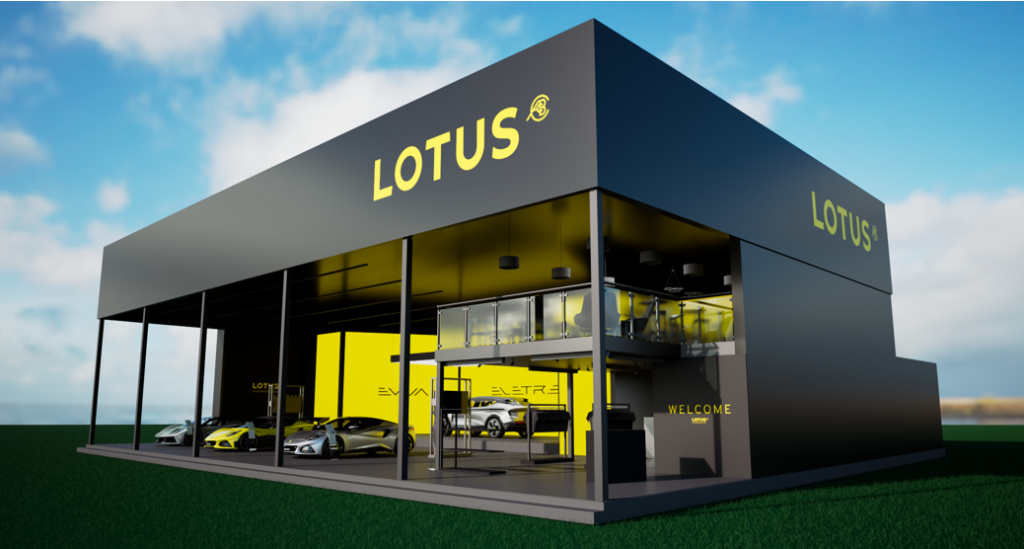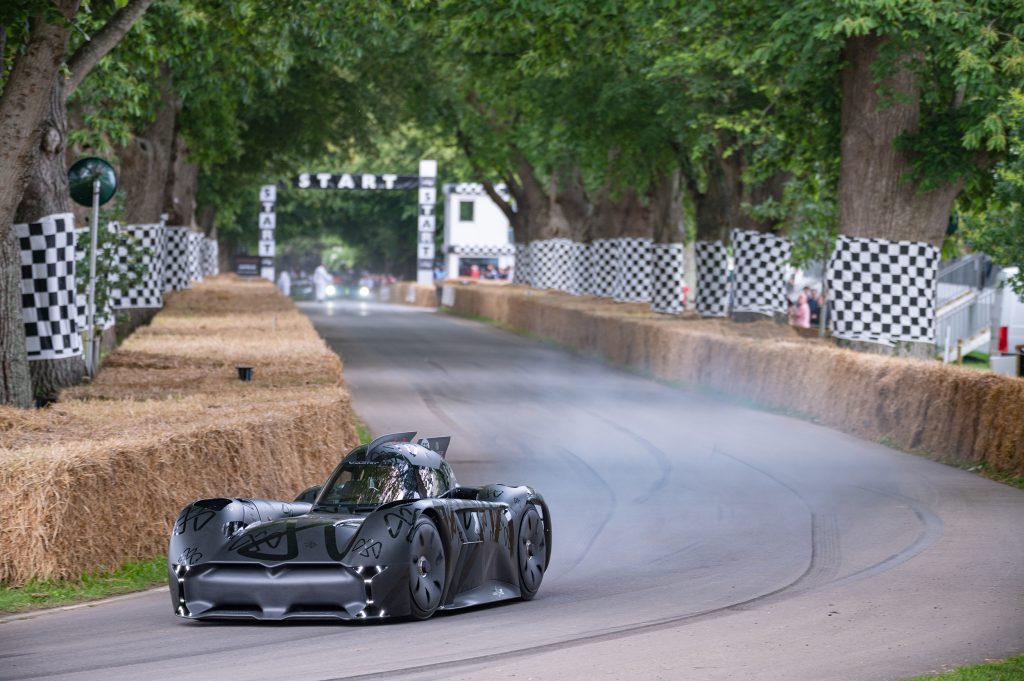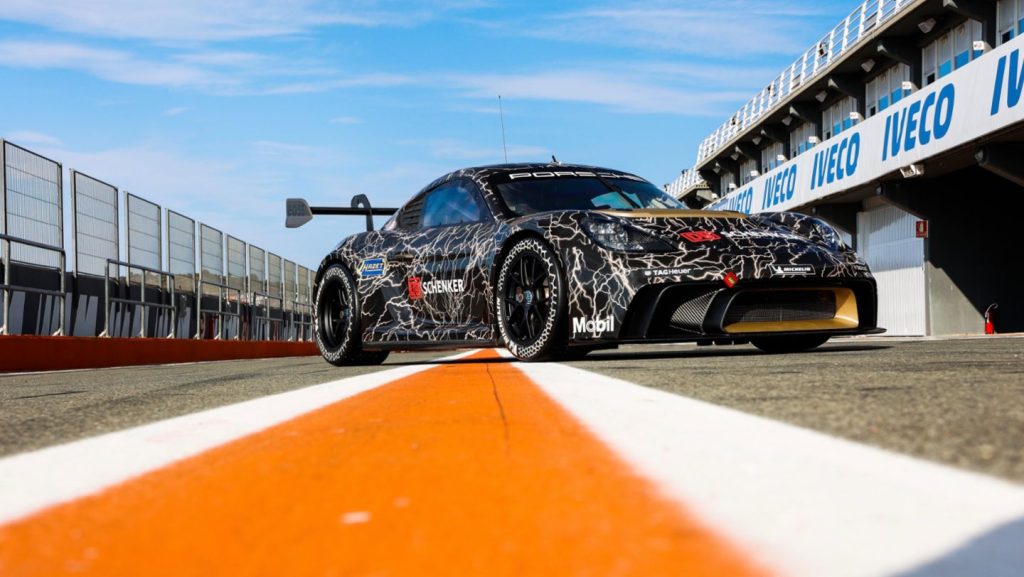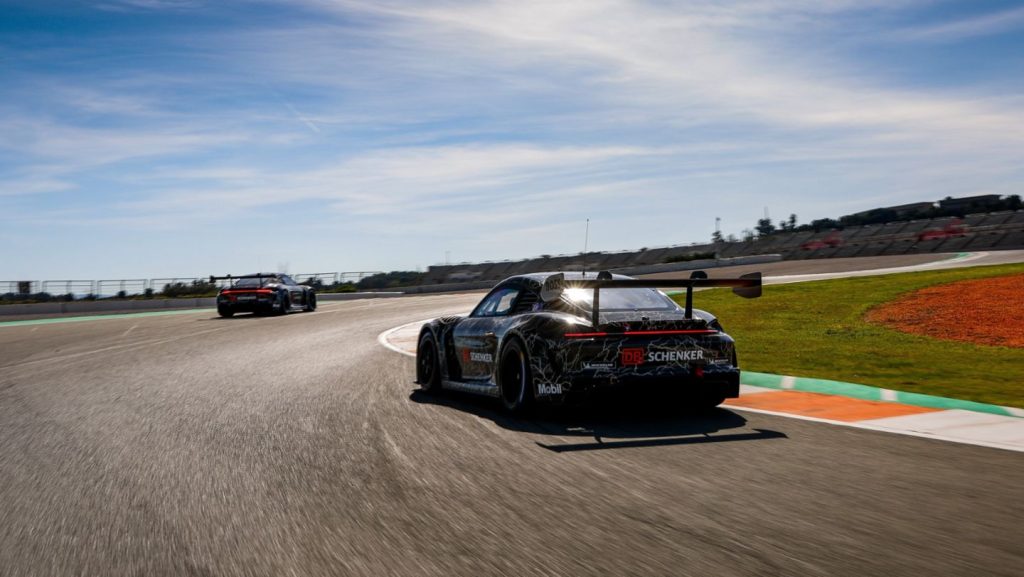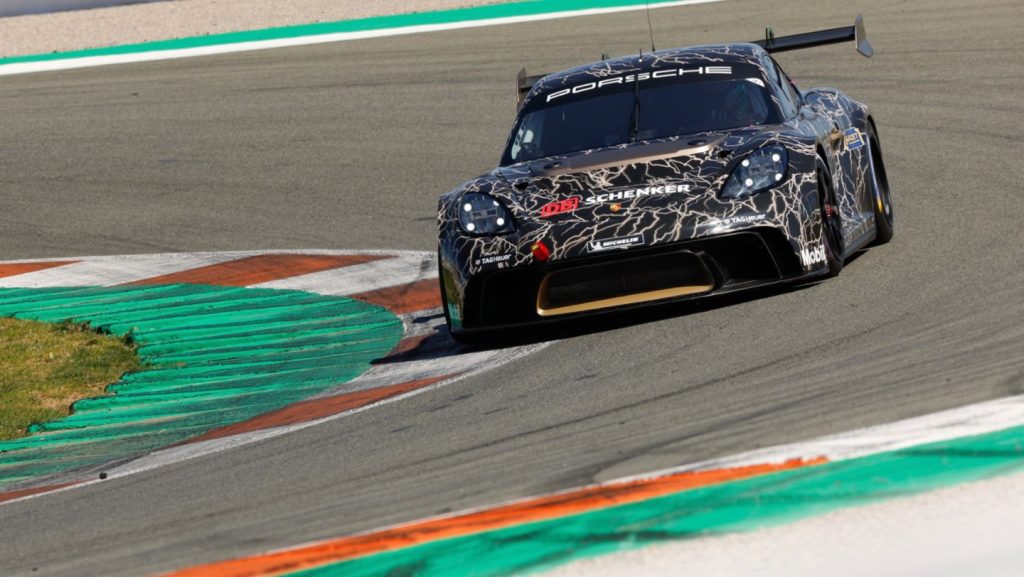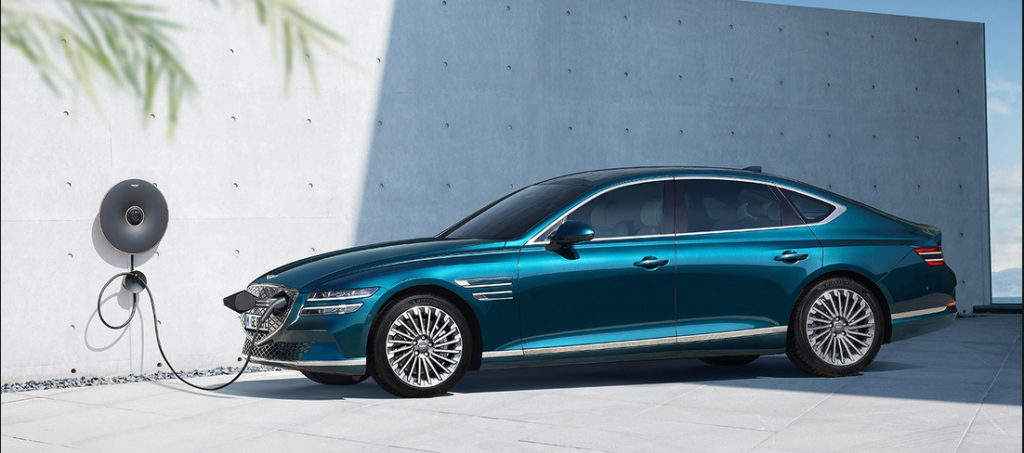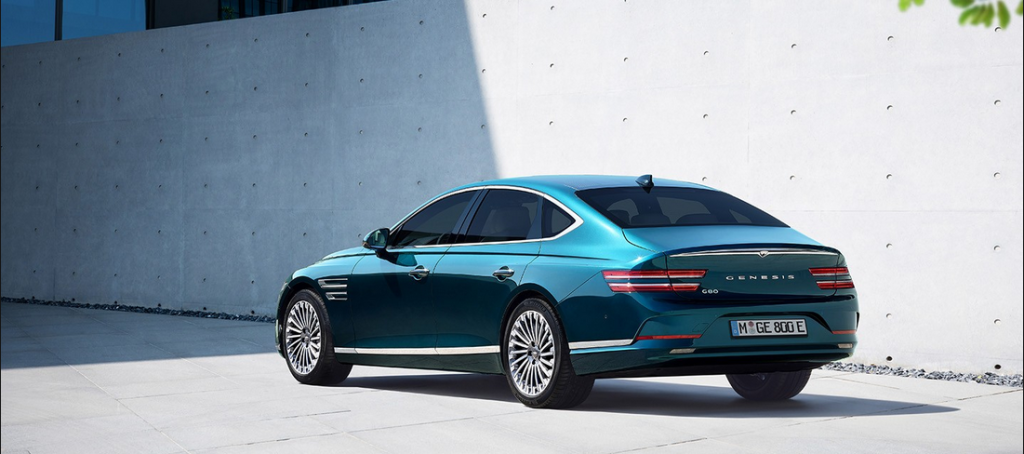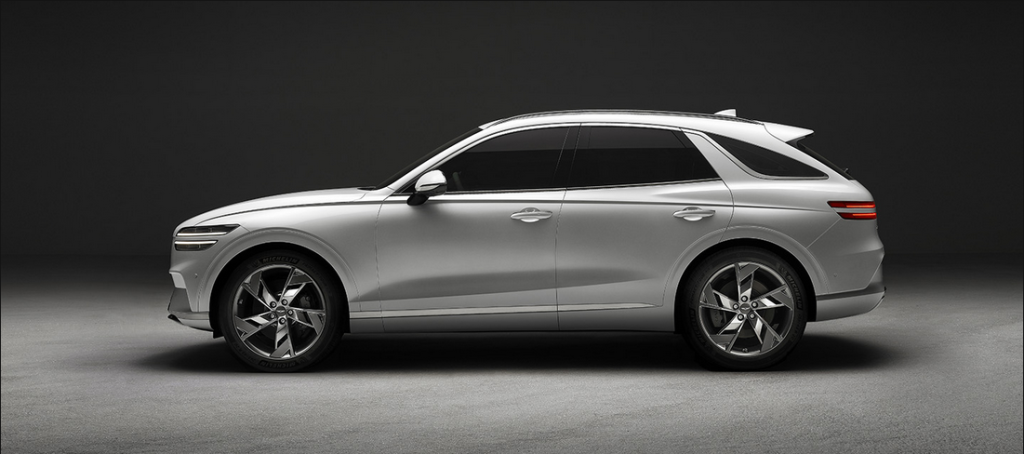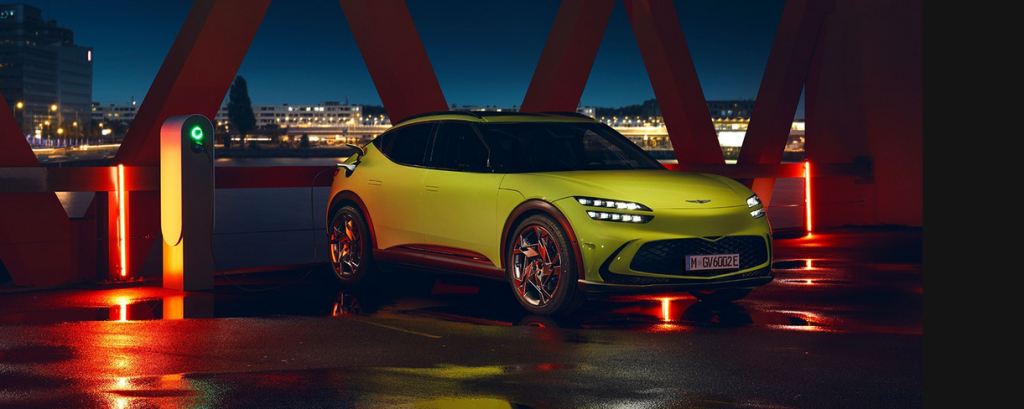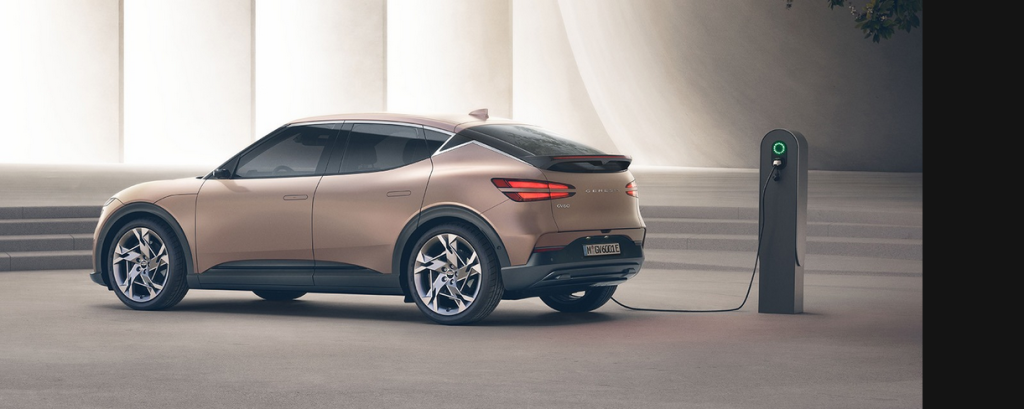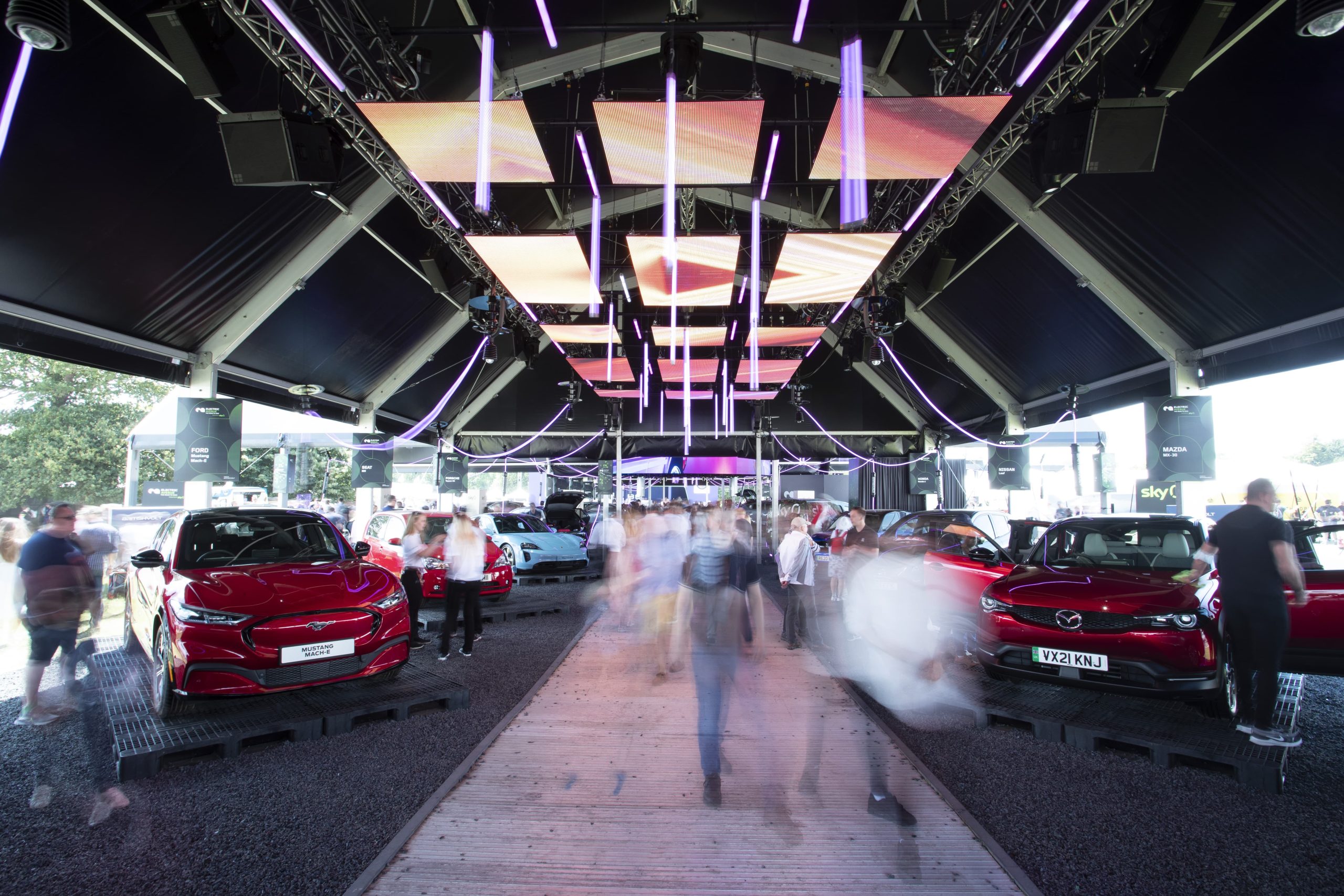
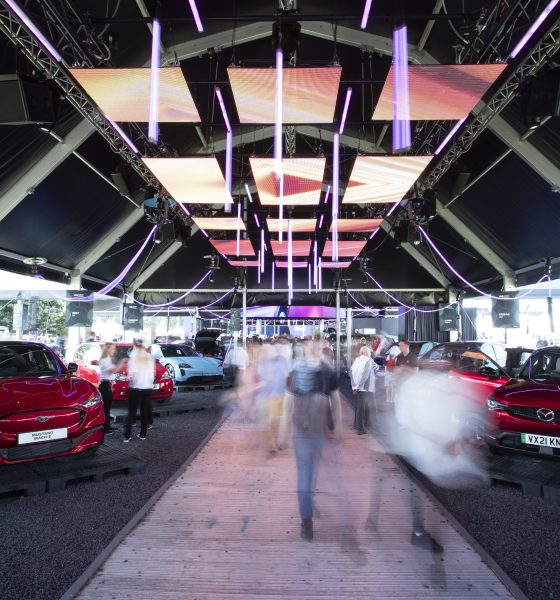
News
Goodwood hosts the introduction of many new EVs
This week, the Goodwood Festival of Speed is happening in West Sussex, England, and many manufacturers are showing off production and concept electric vehicles.
The Goodwood Festival of Speed has been an annual event showing off many different cars since 1993. Since its inception, Goodwood has been the chosen location for many manufacturers to reveal their new cars, especially those who are looking to impress and allure the European market. This year is no different, and electric vehicles have become more of a part of the festival than ever before with the introduction of the Goodwood “Electric Avenue.”
For those unable to attend the event this year, this article will be a culmination of all the new electric vehicles being shown at the event, production, concept, racecar, or otherwise.
Polestar –
- Polestar 5 prototype on track (Credit: Polestar)
- Polestar to debut first electric performance SUV, Polestar 3, in October 2022
Polestar brought multiple vehicles to the Goodwood festival of speed; the Polestar 2, Polestar 3 SUV, and even their prototype Polestar 5 GT sedan. The Polestar 5 was the star of the show, and according to their press release on the vehicle, the Polestar will have a new 800-volt architecture and will be paired with a dual-motor 884 horsepower and 663 pound-feet of torque motor system. Range information, release date, and pricing have not been released for the vehicle yet.
Polestar has been documenting the process of the transformation of the Polestar Precept concept car into the Polestar 5 that we see today on their YouTube channel. More specific details about interior and exterior design can be found there.
No specific specifications have yet been released for the Polestar 3 SUV. However, in the most recent press release on the SUV, the company claimed it was aiming for a 372-mile WLTP range and would partner with computer chip manufacturer Nvidia to implement a LIDAR system on the vehicle.
Ford –
- Ford SuperVan interior (Credit:Ford Performance)
- Ford Supervan side profile (Credit:Ford Performance)
- Ford SuperVan Driver Corner (Credit:Ford Performance)
While headlining their ever-popular Mach E, Ford also revealed their “Pro Electric SuperVan.” The concept of the SuperVan originated, according to MotorTrend, in the early 70s as a cargo van’s body was wrapped around a GT40’s internals. Ford made two generations of Supervan after its first appearance, but in this fourth generation, it is going electric. This proof-of-concept vehicle took the vague body shape of the new Ford E Transit, lowered it to the ground, and introduced massive flying buttresses to the typically tame utility van. In MotorTrend’s interview with Ford, they say that the van can go from 0-60 in just under 2 seconds and that the vehicle has roughly 2000 horsepower. Hopefully, this vehicle, much like previous SuperVans, is not planned to race or be sold. It does highlight some of the amazing electric technology Ford is working to bring to consumers and may even pique the interest of more combustion-minded car enthusiasts.
Lexus –
- (Credit: Lexus)
- Lexus Concept Coupe to be unveiled at Goodwood 2022 (Credit:Lexus)
- Lexus Coupe Concept from the front (Credit: Lexus)
Lexus first revealed its LFA lookalike EV back in December of last year, but other than the claim that the vehicle will be able to do 0-60 in the mid-2 seconds, little to nothing is known about the vehicle. From what is listed on the Lexus website, the brand states the vehicle may use solid-state batteries and will hope to achieve a range of 430 miles per charge, a number certainly capable of competing with Tesla if released.
The other vehicle brought to Goodwood by Lexus is the recently revealed RZ 450e, the Lexus variant of the BZ4X/Soltera. Similarly to the other all-wheel-drive variants, the vehicle will have ~226 miles of range, feature an all-wheel-drive setup via dual motors, and will be able to fast charge at 150kW, allowing 20%-80% in roughly half an hour. Where the Lexus differs from its Toyota and Subaru siblings is in its power, the vehicle will produce 312 horsepower compared to the 215 on the Subaru and Toyota.
More broadly, Akio Toyoda announced in December of last year that the Lexus EV coupe and new RZ 450e will be part of 16 new electric vehicles that Toyota plans to bring to the market. These electric vehicles are a key part of Toyota’s carbon neutrality strategy.
Lotus –
- Lotus Eletre press release March 2022 (Credit: Lotus)
- Lotus Goodwood stand; three car garage 2022 (Credit: Lotus)
- Lotus Evija at Monterey Car Week (Credit: Lotus)
With the acquisition of the Lotus brand in 2017, the brand has been doing a lot of work to rejuvenate itself. Its most recent attempt to do so comes in the form of two electric vehicles. The Lotus Evija is the brand’s newest quad motor electric hypercar; making 1972 horsepower, weighing only 3703 pounds (making it the lightest production EV according to Lotus), and maintaining a WLTP range of 215 miles.
The other EV shown by Lotus at Goodwood is their new Eletre SUV. This electric SUV is set to compete with the likes of the Tesla Model X Plaid, the Rivian R1S, and perhaps the future Mercedes EQG. The 4wd SUV uses a dual motor setup paired to an over 100kwh battery, is capable of up to 900 horsepower, and claims the first-ever “deployable LIDAR system” in a production EV.
McMurtry –
- McMurtry Speirling debut at Goodwood 2022 (Credit:McMurtry)
- McMurtry Spiering and driver (Credit:McMurtry)
The startup McMurtry Automotive has designed and built a single-seater electric racecar that they hope will be able to achieve 0-60 in 1.5 seconds; the Speirling. According to the company’s website, the car will supposedly be able to achieve this due to a vacuum system that sucks air from under the car, essentially giving the car downforce even while stationary. On top of that, the car weighs under 2,205 pounds and has a power-to-weight ratio of 1,000 horsepower per ton.
Porsche –
- Cayman GT4 ePerformance as seen on track in testing in Valencia (Credit:Porsche)
- Porsche 718 Cayman GT4 ePerformance on track from behind in Valencia
- Porsche 718 Cayman GT4 ePerformance on track in Valencia (Credit:Porsche)
Perhaps one of the most eye-catching vehicles at Goodwood this year is the Porsche 718 Cayman E-Performance. Porsche took one of their GT4 Cayman ICE vehicles but replaced the engine with a dual motor setup and a battery that is designed to allow for 30 minutes of track use, or what Porsche says is the exact length of a Carrera Cup Race. Porsche says the motor system can produce 986 horsepower peaks but produces 603 horsepower in the effort of maintaining power throughout the 30 minutes. Matthias Shultz, a Porsche Racing project manager, comments as part of an accompanying Porsche press release that “we’ve shown how Porsche envisages sustainable customer motor racing in the future. The 718 Cayman GT4 ePerformance now demonstrates that this vision works impressively on the racetrack.”
According to Car and Driver, this prototype vehicle comes before the anticipated next generation of Cayman and Boxster vehicles that will be adopting an electric drive train that will be released in 2025. These models will be a key part of Porsche’s plan to become carbon neutral by 2030.
Kia/Hyundai –
- Electrified G80 seen plugged in via Genesis website
- Genesis G80 Electrified back driver side via Genesis website
- Genesis GV70 side profile via Genesis website
- Genesis GV70 in the dark via Genesis website
- Genesis GV60 at night via Genesis website
- Genesis GV60 via Genesis website
- Genesis Speedium X Concept car to be featured at Goodwood 2022 (Credit:Genesis)
Kia and Hyundai are no longer new to the EV industry, especially after their successful launches of the EV6 and Ioniq 5, respectively. At Goodwood, Kia and Genesis showcased a combined four production electric models and will supposedly also show their Speedium Coupe concept car.
The Kia EV6 GT was on display and will be the high-performance version of the current EV6 on the market. The new EV6 will have 576 horsepower and 545 pound-feet of torque, propelling the vehicle to 60 in 3.5 seconds and achieving a top speed of 161 miles per hour. However, with competition from its own Genesis brand for other powerful electric crossover vehicles, it is unclear how much attention the GT will receive.
The Genesis vehicles, the GV60, GV70, and G80 are the more upscale versions of the EV6 platform. Looking at the Genesis website, each of them offers impressive specifications, but each is going after quite a different clientele. For the performance luxury sedan lovers, the G80 will offer 323 miles of WLTP estimated range, will be capable of “22-minute ultra-fast charging” (from 10%-80%) via Hyundai/Kia’s new 800-volt architecture, and feature a dual-motor all-wheel-drive system delivering 364 total system horsepower.
Crossover customers will have the choice of either the GV60 or the larger GV70. The GV60 will offer slightly better performance than the G80 in many different ways; it will have a max of 321 miles of WLTP estimated range (front-wheel-drive model), will be capable of “18-minute ultra-fast charging” (from 10%-80%) and will offer a max of 483 total system horsepower from a dual-motor setup (all-wheel-drive model). The GV70 has not had full specs announced as of yet but will likely be very similar to its GV60 counterpart; ~18-minute fast charging, ~490 horsepower, etc. What Genesis has said is that the GV70 will be capable of vehicle-to-load use.
Finally, Genesis will supposedly reveal their Genesis X Speedium Coupe, which was first introduced as a concept car titled the X Concept. However, Goodwood is the first place the vehicle has been seen in the real world. If the looks and the other vehicles released are anything to go by, its specifications may be incredible.
Fisker
- (Credit: Fisker)
- Credit: Fisker Inc.
Fisker is part of a smaller group of startups that made an appearance at the festival, however, with news that they recently hit over 50,000 reservations, Fisker may now be worthy of the attention of many looking for an affordable EV SUV. There is still only limited information in terms of specifications, however, the brand plans on a starting price of $37,499. The brand’s website does state that the top-of-the-line Ocean SUV will be able to achieve 350 miles of range and will have a dual-motor all-wheel-drive system.
Perhaps more striking is the many interior quirks they list on the website. A pivoting center screen and rolling down rear window are listed prominently while they also highlight the Ocean’s many “terrain modes.” According to Motor1, more detailed specifications will be announced in November.
Renault
- Renault 5 shown in 50th year anniversary of the vehicle (Credit:Renault)
- Renault 5 Concept and Renault Megane EV shown at Munich Motor Show 2021 (Credit:Renault)
While the Renault 5 has been stuck in concept car purgatory for nearly a year now, there is still reason to keep hope. In an interview with Top Gear last year, the CEO of Renault group, Luca de Meo, stated that Renault was significantly shaken when he took charge. One of the first things the CEO did was cancel 7 new ICE products and replaced them with 8 EVs that will hopefully appear in Renault or Nissan’s lineup within the next few years. One of those cars was the Renault 5, a vehicle that de Meo promised would “democratize the electric vehicle.” As of now, no specifics have been revealed about the vehicle, but this hasn’t stopped many from speculating.
With the recent release of the electric Renault Megane, many believe that the five would use a similar platform and hence, achieve similar specifications. The Megane tops out at 217 horsepower from its front-drive system, achieving 220 miles of range via a 60kWh battery, and starts at 36,000 pounds in England.
E-Go
- E.GO e.wave X seen here in yellow via E.GO website.
- E.GO Life car via E.Go website
E.GO is an EV startup from Germany looking to bring another small electric hatchback to Europe in the form of their Life and e.wave X models. According to the company’s website, both are available for pre-order. However, it is unclear how competitive their vehicle will be, considering it will have a goal starting price of 25,000 euros. The vehicle features lackluster specs compared to many of the other models shown at Goodwood; charging at only 11kWh, capable of a “city miles” range of 150 miles, and while only using a single motor front-wheel drive 100hp setup. This car will likely have to compete with larger brands by competing on price, but it is unclear at this time if the 25,000 euro price tag is low enough.
Formula E
- Next generation formula e jaguar car in testing on track.
- Porsche’s gen 3 formula e car in testing.
Formula E also made an appearance at the Goodwood hill climb. The Mahindra racing team introduced their new livery and a third-generation racecar that will compete in the upcoming season 8 of Formula E. The Formula E website lists many upgrades coming to the new car; the new open-wheel racer will be capable of 200mph top speeds, will use 40% regenerated energy throughout the race, will ditch rear hydraulic breaks in exchange for a regenerative front and rear motor system, and will feature 600kW hyper-fast charging (allowing for short charging pit stops mid-race). These incredible upgrades over the previous generation may change the sport significantly in the upcoming year.
What do you think of the article? Do you have any comments, questions, or concerns? Shoot me an email at william@teslarati.com. You can also reach me on Twitter @WilliamWritin. If you have news tips, email us at tips@teslarati.com!

Elon Musk
Elon Musk’s X will start using a Tesla-like software update strategy
The initiative seems designed to accelerate updates to the social media platform, while maintaining maximum transparency.

Elon Musk’s social media platform X will adopt a Tesla-esque approach to software updates for its algorithm.
The initiative seems designed to accelerate updates to the social media platform, while maintaining maximum transparency.
X’s updates to its updates
As per Musk in a post on X, the social media company will be making a new algorithm to determine what organic and advertising posts are recommended to users. These updates would then be repeated every four weeks.
“We will make the new 𝕏 algorithm, including all code used to determine what organic and advertising posts are recommended to users, open source in 7 days. This will be repeated every 4 weeks, with comprehensive developer notes, to help you understand what changed,” Musk wrote in his post.
The initiative somewhat mirrors Tesla’s over-the-air update model, where vehicle software is regularly refined and pushed to users with detailed release notes. This should allow users to better understand the details of X’s every update and foster a healthy feedback loop for the social media platform.
xAI and X
X, formerly Twitter, has been acquired by Elon Musk’s artificial intelligence startup, xAI last year. Since then, xAI has seen a rapid rise in valuation. Following the company’s the company’s upsized $20 billion Series E funding round, estimates now suggest that xAI is worth tens about $230 to $235 billion. That’s several times larger than Tesla when Elon Musk received his controversial 2018 CEO Performance Award.
As per xAI, the Series E funding round attracted a diverse group of investors, including Valor Equity Partners, Stepstone Group, Fidelity Management & Research Company, Qatar Investment Authority, MGX, and Baron Capital Group, among others. Strategic partners NVIDIA and Cisco Investments also continued support for building the world’s largest GPU clusters.
News
Tesla FSD Supervised wins MotorTrend’s Best Driver Assistance Award
The decision marks a notable reversal for the publication from prior years, with judges citing major real-world improvements that pushed Tesla’s latest FSD software ahead of every competing ADAS system.

Tesla’s Full Self-Driving (Supervised) system has been named the best driver-assistance technology on the market, earning top honors at the 2026 MotorTrend Best Tech Awards.
The decision marks a notable reversal for the publication from prior years, with judges citing major real-world improvements that pushed Tesla’s latest FSD software ahead of every competing ADAS system. And it wasn’t even close.
MotorTrend reverses course
MotorTrend awarded Tesla FSD (Supervised) its 2026 Best Tech Driver Assistance title after extensive testing of the latest v14 software. The publication acknowledged that it had previously criticized earlier versions of FSD for erratic behavior and near-miss incidents, ultimately favoring rivals such as GM’s Super Cruise in earlier evaluations.
According to MotorTrend, the newest iteration of FSD resolved many of those shortcomings. Testers said v14 showed far smoother behavior in complex urban scenarios, including unprotected left turns, traffic circles, emergency vehicles, and dense city streets. While the system still requires constant driver supervision, judges concluded that no other advanced driver-assistance system currently matches its breadth of capability.
Unlike rival systems that rely on combinations of cameras, radar, lidar, and mapped highways, Tesla’s FSD operates using a camera-only approach and is capable of driving on city streets, rural roads, and freeways. MotorTrend stated that pure utility, the ability to handle nearly all road types, ultimately separated FSD from competitors like Ford BlueCruise, GM Super Cruise, and BMW’s Highway Assistant.
High cost and high capability
MotorTrend also addressed FSD’s pricing, which remains significantly higher than rival systems. Tesla currently charges $8,000 for a one-time purchase or $99 per month for a subscription, compared with far lower upfront and subscription costs from other automakers. The publication noted that the premium is justified given FSD’s unmatched scope and continuous software evolution.
Safety remained a central focus of the evaluation. While testers reported collision-free operation over thousands of miles, they noted ongoing concerns around FSD’s configurable driving modes, including options that allow aggressive driving and speeds beyond posted limits. MotorTrend emphasized that, like all Level 2 systems, FSD still depends on a fully attentive human driver at all times.
Despite those caveats, the publication concluded that Tesla’s rapid software progress fundamentally reshaped the competitive landscape. For drivers seeking the most capable hands-on driver-assistance system available today, MotorTrend concluded Tesla FSD (Supervised) now stands alone at the top.
News
Elon Musk’s Grokipedia surges to 5.6M articles, almost 79% of English Wikipedia
The explosive growth marks a major milestone for the AI-powered online encyclopedia, which was launched by Elon Musk’s xAI just months ago.

Elon Musk’s Grokipedia has grown to an impressive 5,615,201 articles as of today, closing in on 79% of the English Wikipedia’s current total of 7,119,376 articles.
The explosive growth marks a major milestone for the AI-powered online encyclopedia, which was launched by Elon Musk’s xAI just months ago. Needless to say, it would only be a matter of time before Grokipedia exceeds English Wikipedia in sheer volume.
Grokipedia’s rapid growth
xAI’s vision for Grokipedia emphasizes neutrality, while Grok’s reasoning capabilities allow for fast drafting and fact-checking. When Elon Musk announced the initiative in late September 2025, he noted that Grokipedia would be an improvement to Wikipedia because it would be designed to avoid bias.
At the time, Musk noted that Grokipedia “is a necessary step towards the xAI goal of understanding the Universe.”
Grokipedia was launched in late October, and while xAI was careful to list it only as Version 0.1 at the time, the online encyclopedia immediately earned praise. Wikipedia co-founder Larry Sanger highlighted the project’s innovative approach, noting how it leverages AI to fill knowledge gaps and enable rapid updates. Netizens also observed how Grokipedia tends to present articles in a more objective manner compared to Wikipedia, which is edited by humans.
Elon Musk’s ambitious plans
With 5,615,201 total articles, Grokipedia has now grown to almost 79% of English Wikipedia’s article base. This is incredibly quick, though Grokipedia remains text-only for now. xAI, for its part, has now updated the online encyclopedia’s iteration to v0.2.
Elon Musk has shared bold ideas for Grokipedia, including sending a record of the entire knowledge base to space as part of xAI’s mission to preserve and expand human understanding. At some point, Musk stated that Grokipedia will be renamed to Encyclopedia Galactica, and it will be sent to the cosmos.
“When Grokipedia is good enough (long way to go), we will change the name to Encyclopedia Galactica. It will be an open source distillation of all knowledge, including audio, images and video. Join xAI to help build the sci-fi version of the Library of Alexandria!” Musk wrote, adding in a later post that “Copies will be etched in stone and sent to the Moon, Mars and beyond. This time, it will not be lost.”

